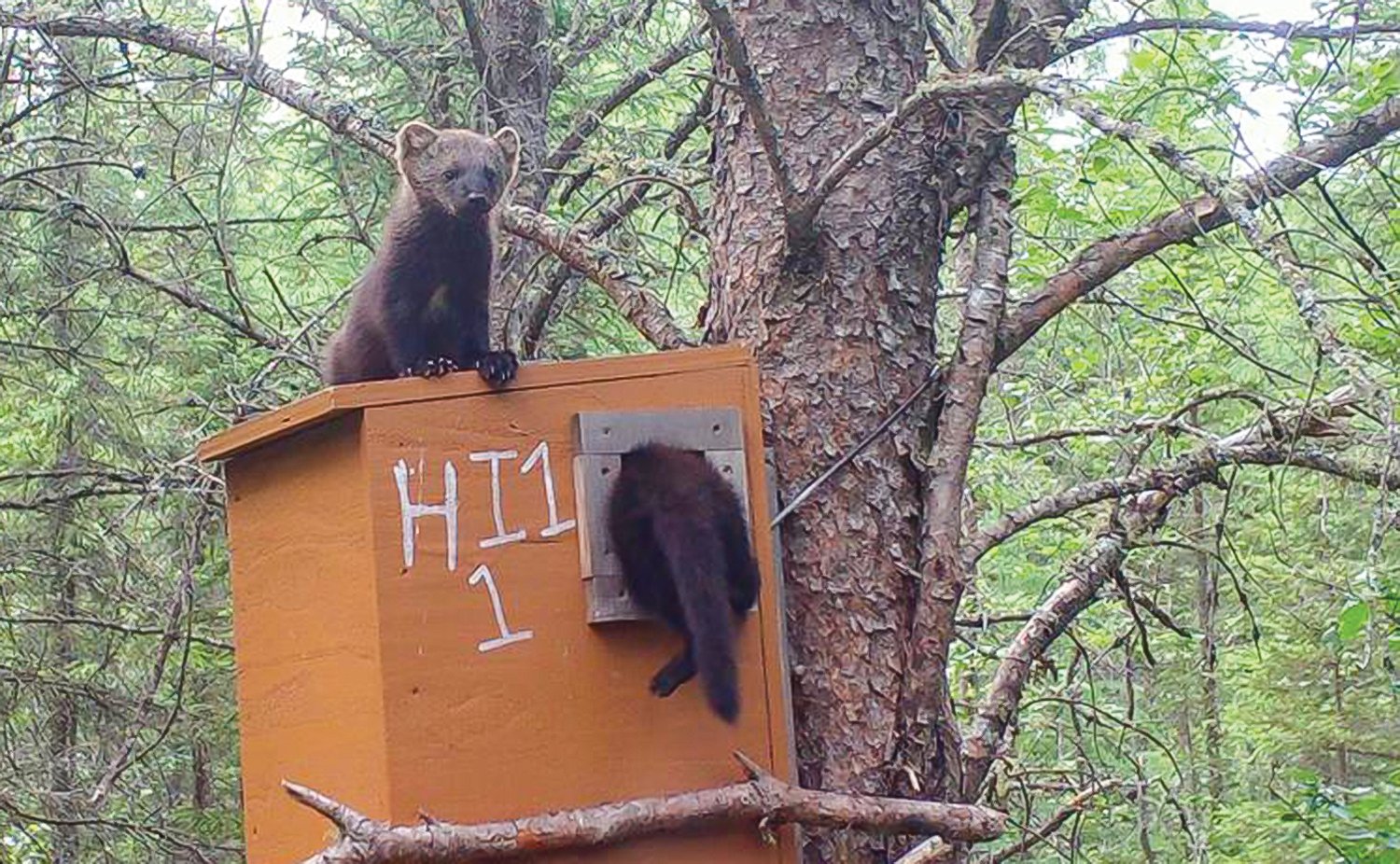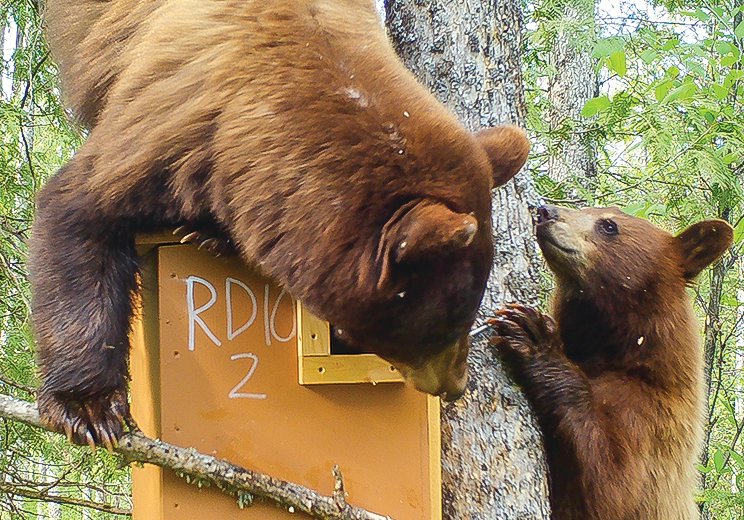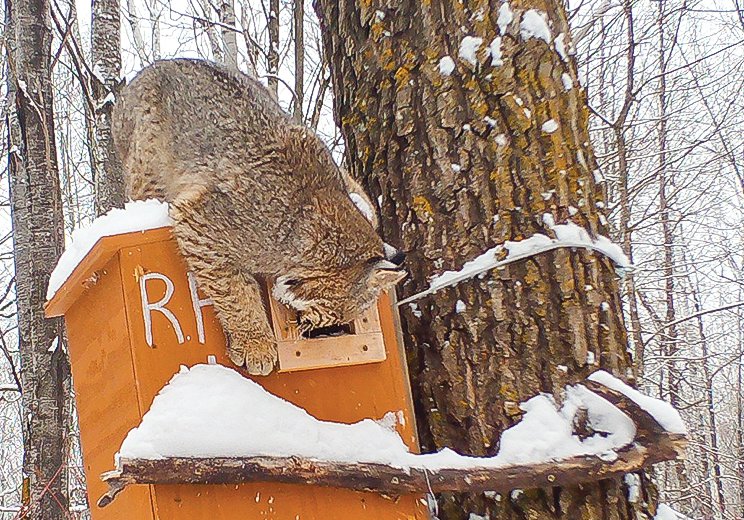Support the Timberjay by making a donation.
Study sends fisher biologists back to the drawing board
Findings show the species is resistant to nesting in artificial boxes
REGIONAL— Three years ago, biologist Michael Joyce installed over 100 “nest” boxes designed to meet the specific needs of the fisher, Minnesota’s largest member of the weasel …
This item is available in full to subscribers.
Attention subscribers
To continue reading, you will need to either log in to your subscriber account, below, or purchase a new subscription.
Please log in to continue |
Study sends fisher biologists back to the drawing board
Findings show the species is resistant to nesting in artificial boxes
REGIONAL— Three years ago, biologist Michael Joyce installed over 100 “nest” boxes designed to meet the specific needs of the fisher, Minnesota’s largest member of the weasel family. Joyce had hoped his project would reveal a potential solution to what appears to be a significant decline in the fisher population in Minnesota.
However, it’s now back to the drawing board after three years of monitoring the boxes revealed that while fishers, and many other forest critters, occasionally sat on them, climbed on them, and even crawled inside them, it appears no fisher ever used one of the boxes for nesting purposes.
Regardless, give Joyce an “A” for effort. As basic science goes, it was a near-Herculean task to build, haul, hang, and monitor all of the boxes, each of which weighed 55 pounds and had to be hauled a considerable distance into the forest before being hung in a tree. Joyce, who works for the Natural Resources Research Institute, or NRRI, had help along the way from various field technicians along with some students from Vermilion Community College. And given that science is about expanding knowledge, even a negative result on an experiment is valuable.
In this case, it means wildlife managers will need to look to other solutions for help in recovering the fisher population. Studies from elsewhere in North America had shown that fishers will use nest boxes for reproduction, a finding that Joyce wanted to confirm here in Minnesota. “To me, that’s the first step, to see if they will use them,” said Joyce in an interview with the Timberjay back in 2019. “Then we need to figure out where they will use them.”
Joyce’s study, funded by a $190,000 grant from the Legislative Citizens Commission on Minnesota Resources, used a variety of methods to monitor use of the boxes, including trail cams and sticky tape that was applied near the entrance to the boxes, designed to collect hair samples. Each box also had a thermometer, which tracked the temperatures inside the boxes. The cameras used by Joyce captured more than three million images, more than Joyce has been able to review so far.
The boxes are heavy duty, built from a double layer of plywood sandwiching foam insulation, which would offer more thermal protection for the animals that utilize them. The nest box entrances were designed specifically to accommodate female fishers, which are significantly smaller than males, while excluding males. That was supposed to offer the females and their young protection from the males, which can be aggressive during breeding periods. The researchers have reinforced the entrance holes with a third layer of dense hardwood to discourage red squirrels from enlarging the entrances.
Female fishers typically give birth to their young in March, and they often breed again within days of giving birth, said Joyce. “Female fishers are effectively pregnant year-round,” said Joyce. But the fertilized embryos are maintained in a kind of suspended animation for months, and only implant and begin to grow during the following winter. This unusual process, known as delayed implantation, is typical of members of the weasel family as well as bears.
While thoughtfully designed, the boxes didn’t attract much interest from female fisher. Fishers, of either sex, were detected at less than half of the boxes, and Joyce didn’t see any indication of females giving birth nor raising kits in the boxes. He speculates that several factors may have deterred them.
“Maybe the box location wasn’t where the fishers wanted them, or they had better natural cavities available,” Joyce said. “We put the boxes in areas with recent presence of fishers, but with their population decline they might not have been there anymore.”
Another outcome of the study will improve data gathering for this species going forward. The thermometers picked up a unique temperature fingerprint for fishers in the boxes. That means researchers can determine if fishers are using the boxes by visiting the sites just once a year and collect data that is much easier to analyze than millions of photos.
Bobcats a possible challenge
Another theory for the recent fisher decline is that their number one predator, the bobcat, might be winning. Research by the Minnesota Department of Natural Resources has shown that this wild feline population has increased to about 7,000 from a low of 2,000 some-40 years ago.
To date, the suggestion that bobcats are preying on fisher is mostly anecdotal. Trapping data does suggest that fisher numbers tend to be low when bobcat numbers are high.
Joyce received additional funding to capture both bobcats and fishers to outfit them with GPS collars and track their overlapping movements for further study.
“Bobcats tend to do well in young forests, while fishers prefer old forests – but there are forest conditions that they both use, especially where they are hunting for shared prey,” said Joyce. This project to gain more insight into fisher and bobcat interactions is underway and the project will continue through 2024.











